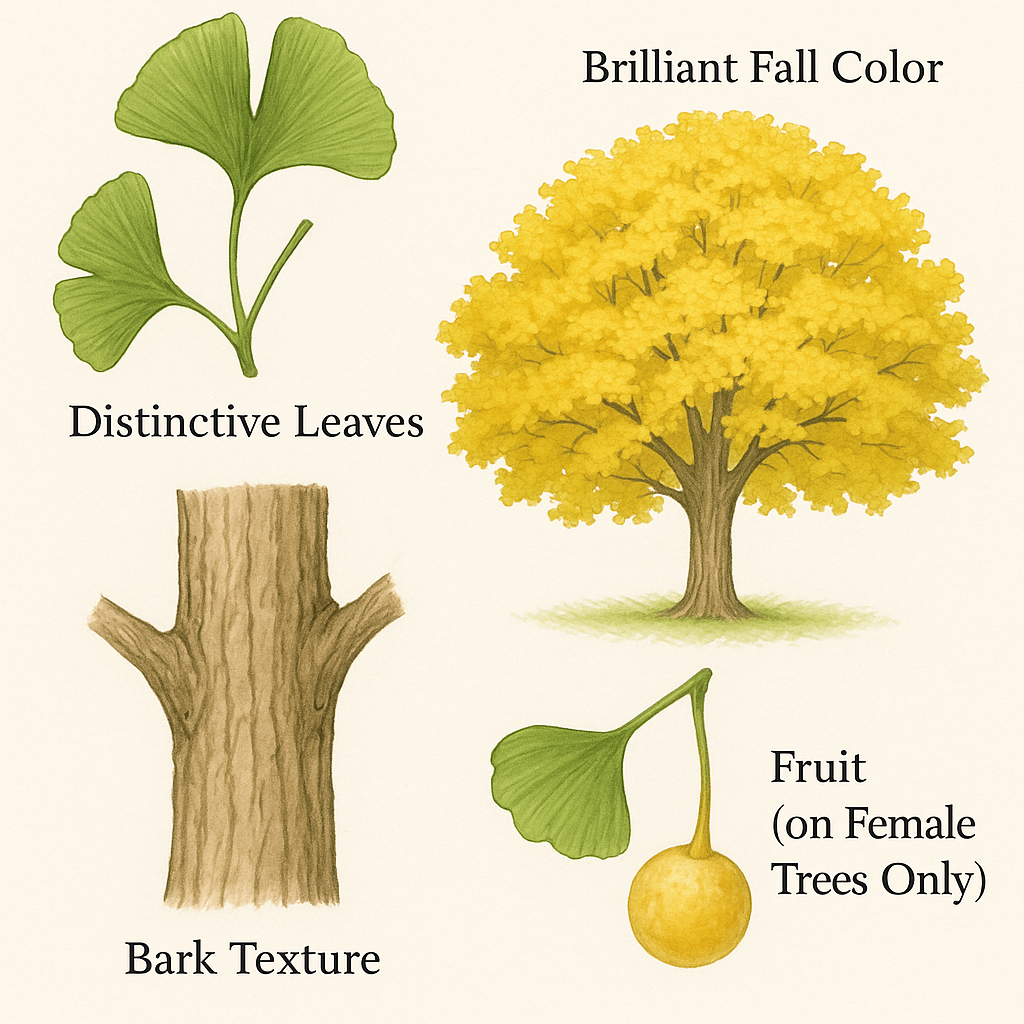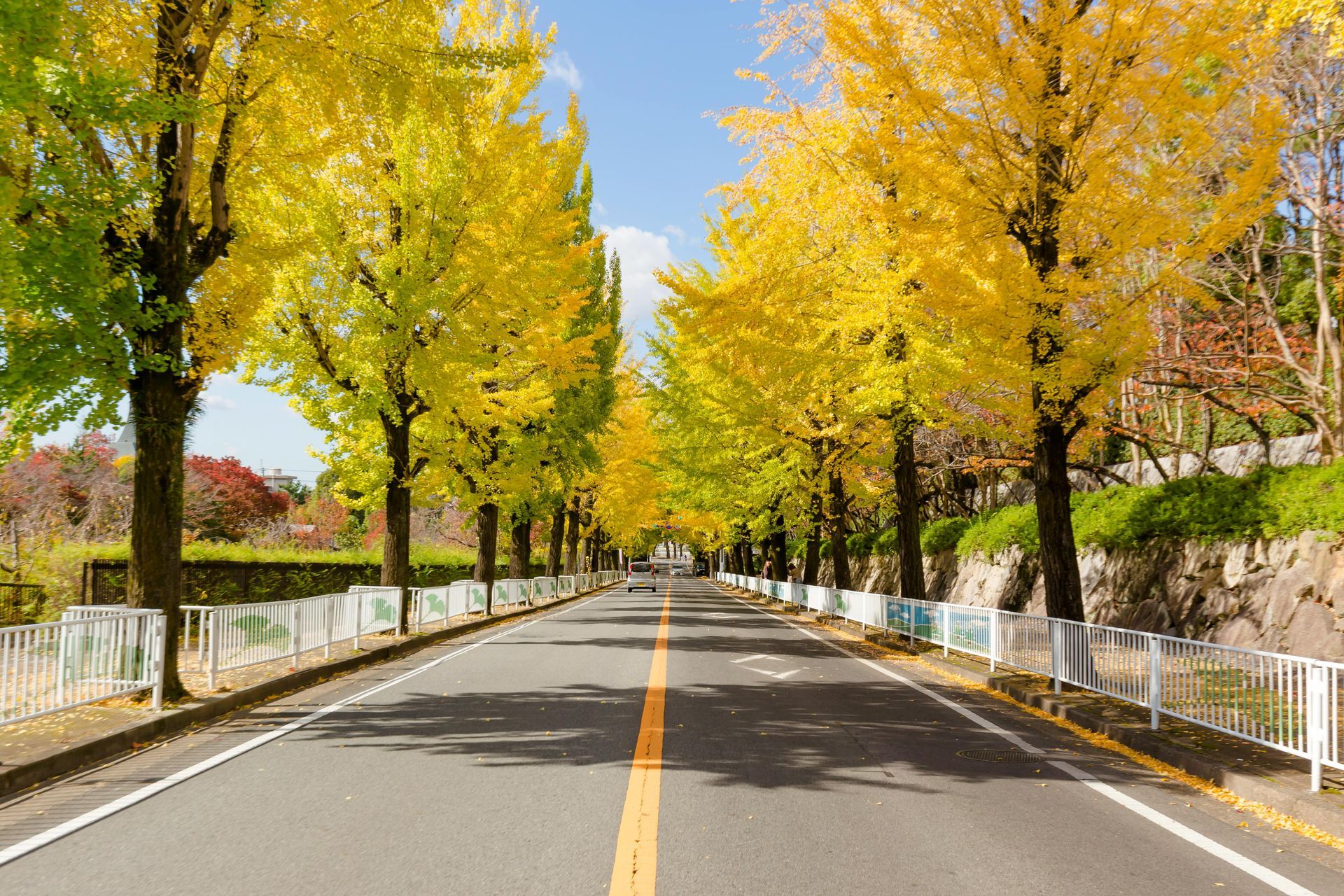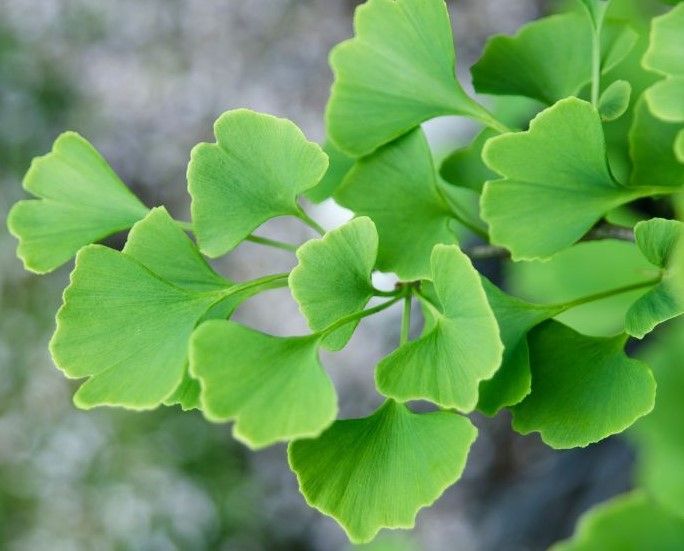The Ginkgo Tree
Ginkgo biloba, commonly known as the maidenhair tree, is native to China and is one of the oldest living tree species—often referred to as a "living fossil". Ginkgo trees are easily recognized by their distinctive fan-shaped leaves, which turn a brilliant yellow in the fall. They are highly tolerant of pollution, pests, and poor soil, making them well-suited for urban environments.
Ginkgo trees typically grow 50 to 80 feet tall, though some can exceed 100 feet. Young trees have an upright, pyramidal shape that broadens with age. Their leaves feature split veins in a fan-like pattern, and their bark is smooth when young, becoming furrowed as the tree matures. Ginkgos are hardy in USDA zones 3 through 9.
How to Identify a Ginkgo Tree
Even if you’ve never heard of a Ginkgo before, once you know what to look for, they’re hard to miss. Here's how to identify one in your neighborhood or yard:

Distinctive Lobed Leaves
The most recognizable feature of a Ginkgo tree is its fan-shaped leaves. They’re broad, flat, and have a leathery texture with veins that radiate out like spokes on a wheel rather than branching like most tree leaves. Some leaves have a split down the middle, giving them a two-lobed appearance (the name biloba actually means "two-lobed").
Brilliant Autumn Yellows
In autumn, Ginkgo leaves turn a vibrant, clear yellow, often all at once. The color is stunning and hard to miss. Many Ginkgo trees will drop their leaves in a single day, forming a golden blanket on the ground.
Unique Branching Pattern
Ginkgos have a somewhat stiff, irregular branching structure, especially when young. As they age, their canopy spreads into a more broad and graceful shape, often becoming quite picturesque.
Bark Texture
Young Ginkgo trees have smooth, light gray bark. As the tree matures, the bark becomes furrowed and rougher, developing ridges that add to its character.
Fruit
Female Ginkgo trees produce round, yellowish fruit in the fall that looks similar to small plums or apricots. However, the fruit has a very strong, unpleasant odor when it falls and decays. Most landscape Ginkgos are male cultivars to avoid this issue.

Gingko Tree Care Guide
Location
When planting a Ginkgo tree, choose a location that receives full sun—ideally at least 4 to 6 hours of direct sunlight per day. Ginkgos thrive in open areas where they have room to grow both vertically and horizontally. Avoid planting too close to buildings or other large trees, as Ginkgos can become quite large over time and need space to develop their broad canopy.
Soil
Ginkgo trees prefer well-draining soil but are highly adaptable and can tolerate a wide range of soil types, including clay, loam, and sandy soils. They do best in soil with a neutral to slightly acidic pH but are not especially picky. To improve drainage in heavy soils, consider mixing in organic matter or compost before planting.
Watering
Although Ginkgo trees are drought-tolerant once established, they need regular watering during the first 2 to 3 years after planting to help develop a strong, deep root system. Water deeply but infrequently, allowing the soil to dry slightly between waterings. During periods of extended drought or extreme heat, even mature Ginkgos may benefit from occasional watering.
Mulching
Apply a 2- to 3-inch layer of mulch around the base of the tree to help retain soil moisture, regulate soil temperature, and suppress weeds. Keep mulch at least 2 to 4 inches away from the trunk to prevent rot and discourage pests. Organic mulches like shredded bark, wood chips, or compost work best.
Fertilizing
Ginkgos generally do not require much fertilization, especially if planted in reasonably fertile soil. However, if you notice slow growth or sparse foliage, you can apply a balanced, slow-release fertilizer (such as 10-10-10) in early spring, just before new growth begins. Avoid excessive fertilization, which can lead to weak, leggy growth.
Pruning
Pruning needs for Ginkgos are minimal. Focus on removing dead, damaged, or crossing branches, especially in the tree’s early years to help shape a strong structure. The best time to prune is late winter to early spring, while the tree is still dormant. Avoid heavy pruning, as it can interfere with the natural growth habit of the tree.
Pests & Problems
Ginkgo trees are remarkably pest- and disease-resistant, making them a low-maintenance choice for home landscapes. The biggest concern is the female tree, which produces fruit that emits a strong, unpleasant odor when it falls. To avoid this, plant a male cultivar, such as ‘Autumn Gold’, ‘Princeton Sentry’, or ‘Fairmount’. Be aware that trees grown from seed won’t reveal their sex for several years, so it's best to buy named male varieties from a reputable nursery.
Protection
Ginkgos are hardy in USDA Zones 3–9, meaning they can tolerate a wide range of climates. However, young trees may be vulnerable to strong winds or late spring frosts, which can damage new growth. Stake young trees if needed and consider using tree wraps or shelters in exposed areas during their first few winters.

Interesting Facts about the Gingko Tree
The Ginkgo tree isn’t just a beautiful tree, it’s a living piece of history. Here are some intriguing facts that might surprise you:
- Ginkgo biloba is the only surviving member of a plant group that dates back over 200 million years. It coexisted with dinosaurs and has remained virtually unchanged since the time of the Jurassic period.
- Several Ginkgo trees famously survived the atomic bombing of Hiroshima in 1945. Though buildings around them were destroyed, the Ginkgos sprouted new leaves within the same year and are still growing today.
- Ginkgo leaves have a distinct fan shape with veins that radiate outward like fingers, unlike most trees that have a branching vein pattern. The leaves are so iconic that they’ve been used in art, jewelry, and even pharmaceutical logos around the world.
- Ginkgo biloba extract is widely used in herbal medicine, especially for its potential to improve memory, circulation, and brain function. Though scientific opinions vary, it remains one of the most popular botanical supplements globally.
- Ginkgo biloba is often called a "biological oddity" because it has no close living relatives. It’s not a flowering plant, nor is it a conifer—it occupies its own unique branch on the tree of life.
- In autumn, Ginkgo trees don’t gradually lose their leaves like most trees. Instead, their foliage turns a brilliant yellow and often drops all at once, sometimes overnight.
Final Thoughts
If you're considering planting a Ginkgo tree, keep in mind that it's a long-term investment. These trees grow slowly but can live for centuries, offering outstanding resilience, unique beauty, and spectacular golden foliage in the fall. With minimal care, your Ginkgo will become a striking centerpiece in your landscape for generations to enjoy.
References:
Maidenhair Tree | Yale Nature Walk
How to Grow and Care for Ginkgo Biloba Trees
Image: Canva
Check out the latest:









